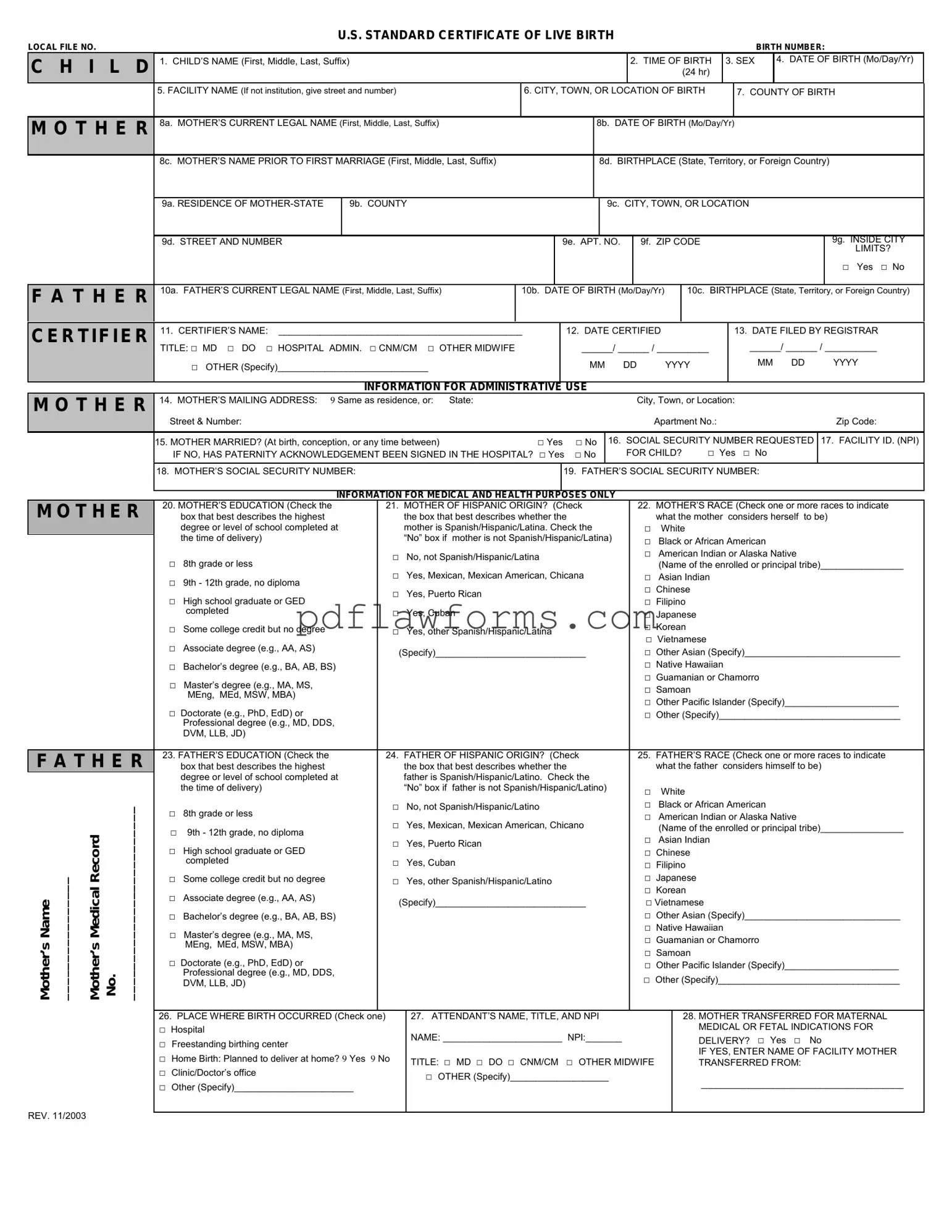The CDC U.S. Standard Certificate of Live Birth form is a critical document used to officially record the birth of a child in the United States. This form captures essential information such as the infant's name, date and place of birth, and the details of the parents, including their names, addresses, and birthplaces. Additionally, it includes sections that document the child's sex, race, and the type of birth, whether it was a single or multiple birth. The form also requires information about the attending physician or midwife, ensuring that all relevant medical personnel involved in the delivery are noted. The data collected on this form serves multiple purposes, including public health statistics, legal identification, and eligibility for various social services. By standardizing the information collected, the form facilitates consistent record-keeping across states and ensures that vital statistics are accurately maintained. Understanding the components of this form is essential for parents, healthcare providers, and anyone involved in the registration process, as it plays a significant role in establishing a child's identity and rights from birth.
